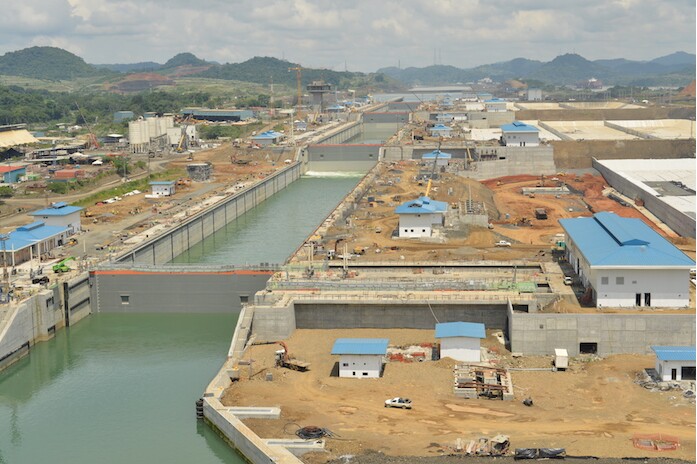Welcome to GLA! Leading the global logistics alliance.


Your location:Home > News > Views differ on outlook for growth in Panama traffic to US East Coast
Time:2016-03-03 Publisher:glafamily Num:10341

LONG BEACH, California — A panel of ocean shipping experts gazed in their crystal balls and saw very different outcomes for shipping patterns after the Panama Canal opens its new larger locks to commercial traffic in June.
A panel, “The New Panama Canal — What It Means,” at the JOC’s 16th Annual TPM Conference here Tuesday agreed that the workhorse of the container services that will transit the new locks coming from Asia to the U.S. East Coast will be vessels with capacities in the range of 6,000 to 8,000 20-foot-equivalent units. But they disagreed on the size of ships that will use the new locks and on whether those ships will lure cargo back from the Suez Canal or away from the West Coast.
John Wheeler, vice president of carrier sales for the South Carolina Ports Authority, said carriers told him they would deploy 10,000- to 12,000-TEU ships from Asia to U.S. East Coast ports after the opening of the new canal locks.
“In 2017, when the Bayonne Bridge (in the Port of New York) is raised, you will see 10,000- to 12,000-TEU ships,” he said. “We are doing simulations for 14,000-TEU vessels.”
But Dean Tracy, managing director of Global Integrated Solutions, cast doubt on how fast ships of either size will switch to the Panama route, because he doesn’t think there is enough cargo coming from South Asia to fill larger ships on the Panama route.
“Most importers will not change from Suez to Panama,” he said. “If there is a rate or transit advantage, they might switch. But rates are so low today to West Coast that I don’t know where they will find incentive to switch to Panama.”
Wheeler said what would drive ships through the Panama Canal will be the lower cost of that route. “The carriers’ only hope is to cut costs. There will be more alliances with big ships, less frequency,” he said.
Beneficial cargo owners may shift some Asian cargo to the East Coast via Panama to guard against any future port disruptions on the West Coast. “We’ve had three problems on the West Coast, in 2002, 2010 and last year,” Wheeler said. “I think many BCOs owe it to themselves to diversify their cargo to the East Coast. People will do that as more slots become available on the super-post-Panamax ships.”
Although the Panama Canal Authority plans to raise tolls when the new locks open, the fees will still be less expensive than tolls at the Suez Canal. But Tracy said it will take years before ships in the 10,000- to 12,000-TEU range will start using the Panama Canal because of the narrow passage at the Culebra Cut.
An executive with a large U.S. port operator at the TPM Conference told JOC.com that Jacques Saade, chairman and CEO of CMA CGM, recently told East Coast port chiefs the French carrier stands ready to call at East Coast ports with ships of 14,000 TEUs and would will deploy ships of 18,000 TEUs as soon as the ports can handle them. CMA CGM ships of this size would have to use the Suez route because the Panama Canal’s new locks can’t handle ships that big.
The CMA CGM Benjamin Franklin, a mega-ship of 18,000 TEUs, called at Los Angeles and Oakland in January, marking the first visit by a ship of that size at any U.S. port.
But it will probably be years before ships of that size can call at East Coast ports. “It takes a long time to get ports ready and the canal ready,” said Dan Smith, principal in the Tioga Group. “Ports won’t fill up right away,” he said. “The BCOs will wait and see how it works.”
U.S. railroads are unlikely to allow much cargo from Asia to shift away from delivery to West Coast ports and then to the Midwest on their intermodal rail services. Railroads have more pricing flexibility than carriers. “They are hungry. They have lost coal traffic, and they have capacity,” Smith said. They won’t lose traffic and will keep rates low to keep cargo coming from West Coast ports.”
Prev:Hapag-Lloyd seeks more oversize cargoNext:UASC upgrades India service network
Recommended Membership
Latest News